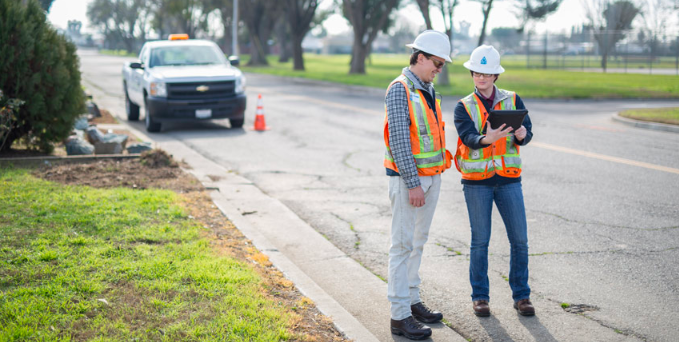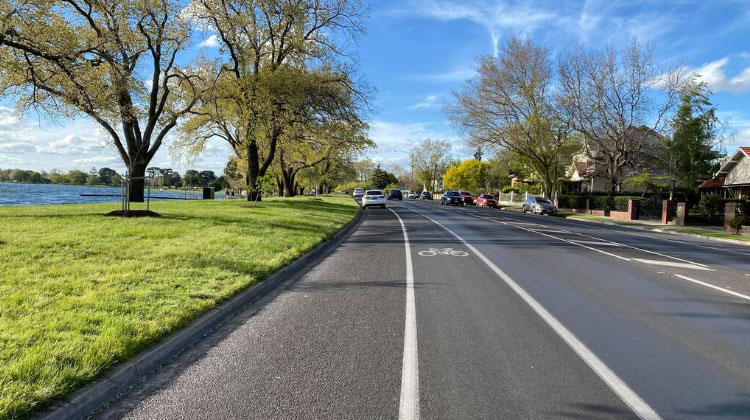
In Australia, one of the key documents guiding the design and construction of off-street facilities is the Australian Standards AS2890.1. This standard provides comprehensive guidelines to ensure that off-street parking areas are designed to accommodate a variety of vehicles while maintaining safety and accessibility. In this blog, we’ll explore the high-level aspects of AS2890.1, its significance, and its application in traffic engineering.
Off-street parking refers to designated parking areas located away from public roads, such as parking lots, garages, and private driveways, designed to accommodate vehicles safely and efficiently. Off-street parking facilities play a crucial role in urban planning and traffic management, ensuring that vehicles are parked safely and efficiently.
AS2890.1 is regarded as a fundamental document in traffic engineering, particularly in the design of off-street parking facilities. It sets out the minimum requirements for layout, dimensions, and safety features, ensuring that parking areas are functional and safe for all users. The standard covers a wide range of aspects, including vehicle circulation, parking space dimensions, ramp gradients, and pedestrian access.
Key Components of AS2890.1
- Parking Layout and Dimensions
- Parking Space Sizes: AS2890.1 specifies the dimensions for different types of parking spaces, including standard, small, and disabled parking spaces. These dimensions ensure that vehicles can park and maneuver safely.
- Aisle Widths: The standard provides guidelines on aisle widths to facilitate easy vehicle movement and minimize the risk of collisions.
- Ramp Gradients: To ensure safety and ease of use, AS2890.1 defines acceptable ramp gradients for different types of vehicles and parking structures.
- Safety and Accessibility
- Pedestrian Pathways: The standard emphasizes the importance of clearly marked pedestrian pathways to enhance safety and accessibility within parking facilities.
- Signage and Markings: Proper signage and pavement markings are crucial for guiding drivers and pedestrians, reducing confusion, and enhancing safety.
- Lighting: Adequate lighting is essential for visibility and security in parking areas, and AS2890.1 provides guidelines on lighting levels to ensure safety.
- Vehicle Circulation
- Entry and Exit Points: The standard outlines the design of entry and exit points to ensure smooth traffic flow and minimize congestion.
- Turning Radii: To accommodate various vehicle types, AS2890.1 specifies minimum turning radii for different parking configurations.
Application of AS2890.1 in Car Park Designs
Incorporating AS2890.1 into design projects ensures that off-street parking facilities are efficient, safe, and user-friendly. Here are a few examples of how this standard is applied:
- Commercial Developments: Ensuring that shopping centers and office complexes have adequate and well-designed parking spaces that meet AS2890.1 standards.
- Residential Developments: Designing parking areas in apartment buildings and housing developments to provide safe and convenient parking for residents and visitors.
- Public Facilities: Creating parking solutions for hospitals, schools, and recreational areas that prioritize safety and accessibility.
Classification of Off-Street Parking Facilities
Off-street parking facilities are classified according to user classes to ensure they meet specific requirements for different types of parking needs. According to AS2890.1, these classifications include several user classes with distinct dimensional requirements and usage scenarios. User Class 1A parking is designated for residential, domestic, and employee parking, featuring restricted dimensions to facilitate efficient parking in residential areas. This classification ensures that everyday users, such as homeowners and employees, have appropriate and accessible parking spaces.
In contrast, User Class 4 parking is specifically reserved for people with disabilities, reflecting the emphasis on accessibility and inclusion. These spaces are designed to meet the needs of individuals with mobility impairments, ensuring they have convenient and safe access to parking facilities. The classification system also includes other user classes, such as long-term parking for city centers (Class 2) and high turnover parking for shopping centers (Class 3A), each tailored to different parking demands and environments. By adhering to these classifications, parking facilities can better serve the diverse needs of all users.
Mandatory Compliance with AS2890.1: Key Benefits
- Enhanced Safety: By following the guidelines of AS2890.1, parking facilities can significantly reduce the risk of accidents and injuries.
- Improved Efficiency: Properly designed parking areas improve traffic flow, reduce congestion, and make it easier for drivers to find and access parking spaces.
- Accessibility: Ensuring that parking facilities are accessible to all users, including those with disabilities, promotes inclusivity and convenience.
- Compliance: Adhering to AS2890.1 ensures compliance with Australian regulations, avoiding potential legal issues and penalties.
Preliminary Design Considerations of Off-Street Parking Facilities
When designing off-street parking facilities, it is essential to consider several preliminary design aspects to ensure efficient and safe operation. According to AS2890.1, the layout of a car park should account for the entire facility, including parking modules, circulation roadways, access driveways, and, if necessary, frontage road access. Key design considerations include minimizing traffic disruption when moving to and from the frontage road and ensuring maximum pedestrian safety. The facility must also provide adequate capacity in circulation roadways and parking aisles to handle peak period movements. and arrange internal roadways to avoid conflicts between intersecting streams of traffic. Additionally, the design should ensure the shortest possible travel paths between entry/exit points and parking spaces, and safely manage points of conflict with pedestrians and other road users.
Moreover, the provision of parking spaces for people with disabilities and accessible pedestrian paths is mandatory, as specified in AS/NZS 2890.6. The standard also details the acceptable parking angles; 90-degree, 30, 45, or 60-degree, and parallel parking; each designed to maximize space efficiency and manage traffic flow effectively. For aisles longer than 100 meters, traffic control devices like speed humps must be used to control vehicle speeds and ensure safety. Assigning user classes to parking modules according to the appropriate classification helps organize the facility, ensuring that spaces for people with disabilities and smaller cars are appropriately allocated and signposted.
Special Considerations for Accessible Car Parking Spaces (DDA Parking)
AS2890.1 places significant emphasis on providing accessible parking spaces for people with disabilities, ensuring that parking facilities cater to all users. According to section 4.3.5, the standards for signage for people with disabilities are specified to ensure these parking spaces are easily identifiable and accessible. This includes the use of conspicuous signs that attract attention and provide clear information from a distance, helping to guide users effectively. The signage must be large enough to be legible at the required distances, enhancing both safety and convenience for disabled users.
In addition to ensuring visibility, the standards also focus on the placement and size of signs, preventing obstructions to sightlines for both drivers and pedestrians. This careful consideration ensures that the parking facilities are not only compliant but also functional and user-friendly for everyone, including those with mobility impairments. By adhering to these guidelines, designers, and engineers can create inclusive environments that promote ease of access and enhance the overall user experience in parking facilities.
Australian Disability Parking Scheme specifies further information in relation to Disability Permits.
Physical Controls in Off-Street Parking Facilities
AS2890.1 outlines essential physical controls to enhance safety and functionality in off-street parking facilities. These controls include kerbs, barriers, wheel stops, and other protective devices. Kerbs, placed on one or more sides of a parking space, protect pedestrian walkways and landscaped areas from vehicle encroachment. Barriers are installed at the edges of platforms or decks to prevent vehicles from running over and encroaching onto pedestrian areas. Wheel stops are used to limit vehicle movement within parking spaces, although their placement must avoid creating hazards for pedestrians or wheelchair users. Other protective devices, such as bollards, are essential for safeguarding structural elements and preventing vehicle encroachment into pedestrian pathways and critical areas like doorways and lifts. These physical controls must not obstruct accessible travel paths for people with disabilities and should be visually distinct from their surroundings to enhance safety and compliance.
Safety Features in Parking Facilities
Ensuring the safety of both vehicles and pedestrians in parking facilities is a primary concern of AS2890.1. The standard includes several safety features designed to protect all users.
Safety Measures:
- Lighting: Adequate lighting is essential to enhance visibility and security. The standard specifies minimum lighting levels for different areas within the parking facility.
- Pedestrian Crossings: Clearly marked pedestrian crossings improve safety by guiding foot traffic and alerting drivers to pedestrian presence.
- Speed Control: Speed bumps and signage help to control vehicle speed within parking areas, reducing the risk of accidents.
- Emergency Access: Designated emergency access routes ensure that emergency services can reach all areas of the facility quickly and efficiently.
Environmental and Aesthetic Considerations
In addition to safety and functionality, AS2890.1 encourages the incorporation of environmental and aesthetic elements into parking facility design.
Key Considerations:
- Green Spaces: Integrating green spaces within parking areas can enhance aesthetics and contribute to environmental sustainability.
- Water Management: Effective drainage systems prevent water accumulation and reduce the risk of flooding.
- Sustainable Materials: Using sustainable construction materials reduces the environmental impact of parking facilities.
- Noise Control: Design elements that reduce noise pollution from vehicles can improve the overall environment for nearby residents and businesses
Maintenance and Management of Parking Facilities
Ongoing maintenance and effective management are critical to ensuring that parking facilities remain safe, functional, and compliant with AS2890.1 standards.
Maintenance Practices:
- Regular Inspections: Routine inspections help identify and address wear and tear, ensuring that all components of the parking facility are in good working order.
- Surface Repairs: Timely repairs of potholes, cracks, and other surface issues prevent further deterioration and maintain safety.
- Signage and Markings: Keeping signage and pavement markings clear and visible is essential for guiding users and maintaining order within the facility.
- Lighting Maintenance: Regular checks and replacements of lighting fixtures ensure that the facility remains well-lit and secure.
Management Strategies:
- User Feedback: Gathering and addressing feedback from users helps identify issues and improve the overall parking experience.
- Technology Integration: Utilizing technology for payment systems, space management, and security can enhance efficiency and user satisfaction.
- Staff Training: Ensuring that management and maintenance staff are well-trained in the standards and best practices of AS2890.1 promotes effective facility operations.
Technological Advancements in Parking Design
Modern technologies are increasingly being integrated into the design and management of off-street parking facilities, enhancing their functionality and compliance with AS2890.1:
- Automated Parking Systems: These systems can maximize space efficiency and improve vehicle handling within parking structures.
- Smart Parking Solutions: Utilizing sensors and real-time data, smart parking solutions help manage parking space utilization and guide drivers to available spots, reducing congestion and improving safety.
- Sustainable Design Practices: Incorporating green building practices and materials can improve the environmental footprint of parking facilities while ensuring compliance with AS2890.1 standards.
Future Trends in Off-Street Parking
Looking ahead, several trends are likely to influence the design and management of off-street parking facilities:
- Electric Vehicle (EV) Charging Infrastructure: As the adoption of electric vehicles grows, parking facilities will need to include charging stations, impacting the design and layout of parking areas.
- Autonomous Vehicles: The emergence of self-driving cars will necessitate changes in parking design, such as drop-off zones and remote parking areas.
- Sustainability Initiatives: Increasing focus on sustainability will drive the integration of green spaces, renewable energy sources, and water management systems into parking facility designs.
Challenges in Implementing AS2890.1
While AS2890.1 provides comprehensive guidelines, implementing these standards can present challenges:
- Cost Implications: Adhering to the standards may increase the initial cost of construction due to the need for specific materials, designs, and safety features.
- Space Limitations: In urban areas with limited space, meeting the dimensional requirements for parking bays and aisles can be challenging.
- Retrofit Difficulties: Updating existing facilities to comply with AS2890.1 can be complex and costly, particularly in older buildings.
Conclusion
Australian Standards AS2890.1 is a vital document for the design and construction of off-street parking facilities. By setting clear guidelines for layout, safety, and accessibility, it helps traffic engineers create parking areas that are safe, efficient, and user-friendly. Whether for commercial, residential, or public use, adhering to AS2890.1 ensures that parking facilities meet the needs of all users while enhancing overall traffic management and safety.













